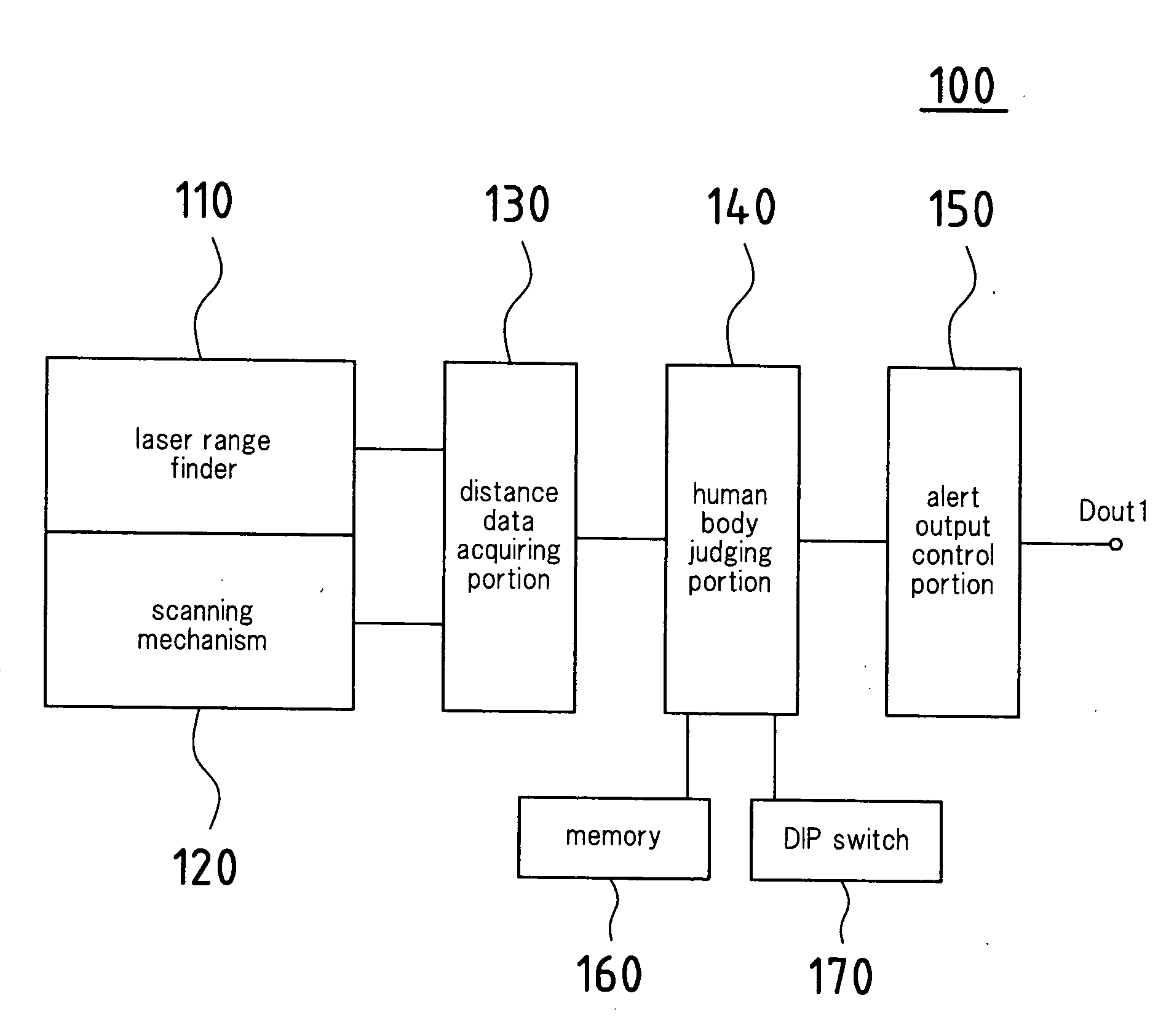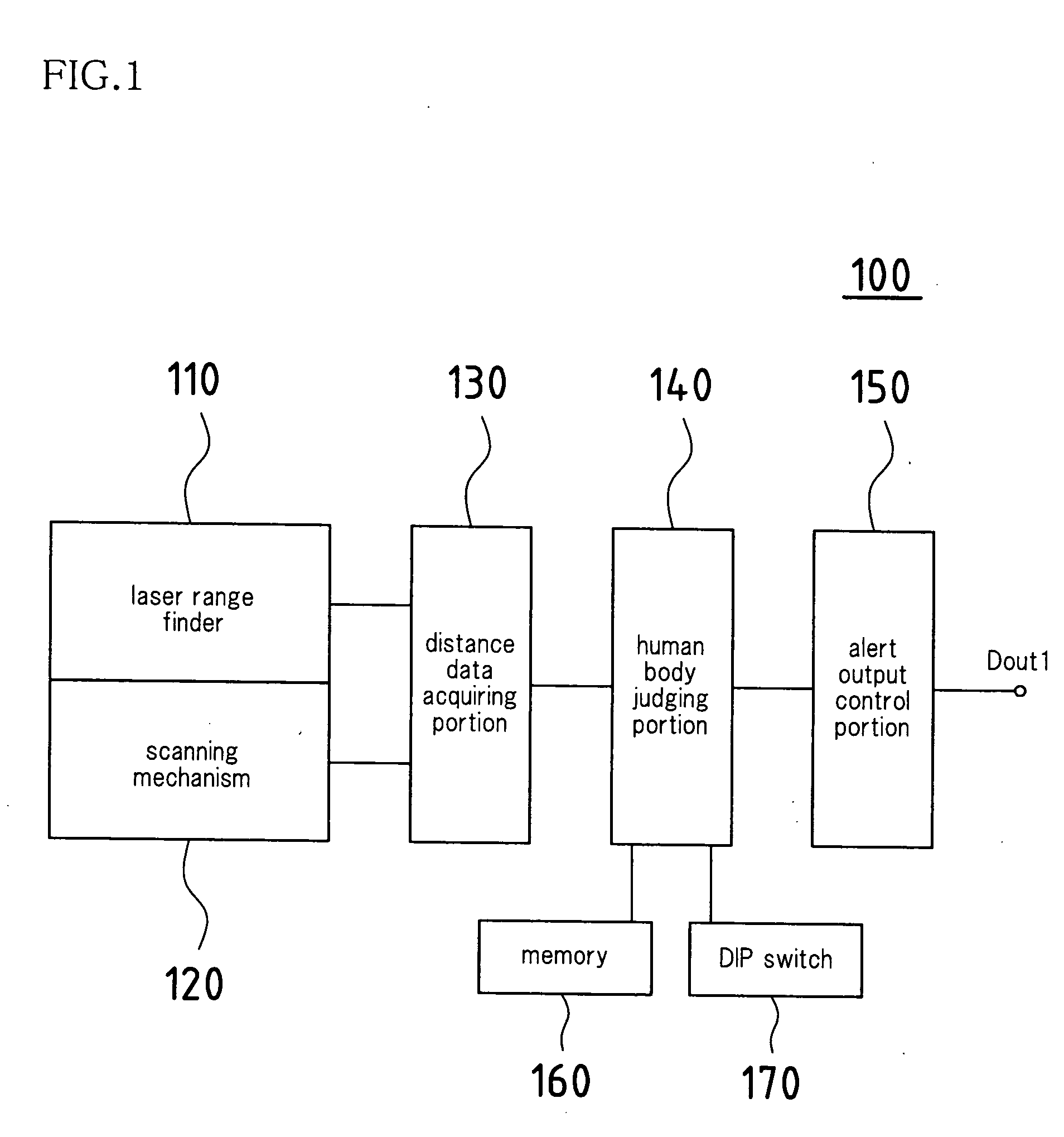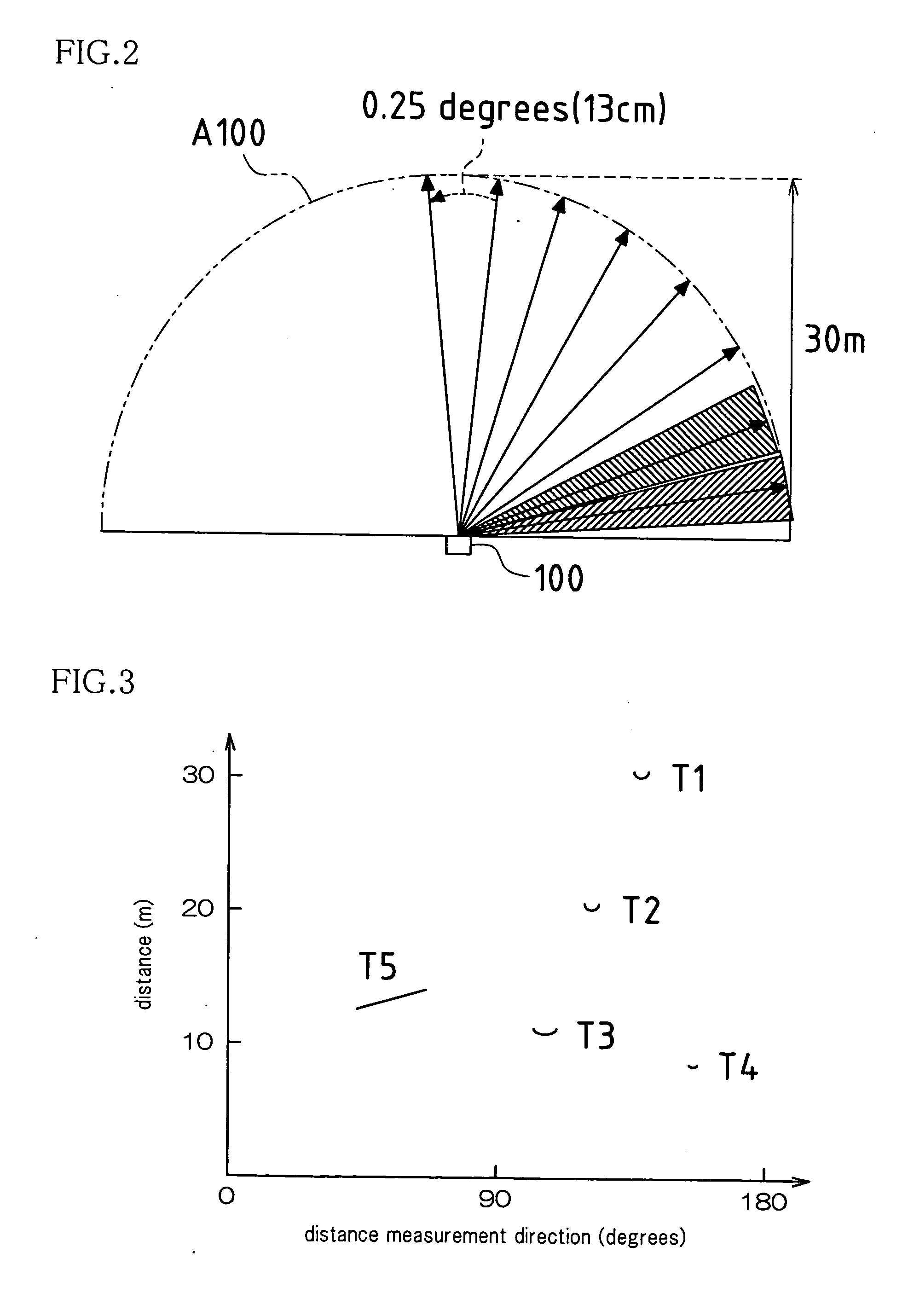Laser area sensor
a laser area sensor and sensor technology, applied in the field of laser area sensors, can solve the problems of inability to easily set up a suitable surveillance area, detect an intruder erroneously, etc., and achieve the effect of improving the reliability of detecting the human body
- Summary
- Abstract
- Description
- Claims
- Application Information
AI Technical Summary
Benefits of technology
Problems solved by technology
Method used
Image
Examples
first embodiment
[0035]FIG. 1 is a block diagram showing the schematic configuration of a laser area sensor 100 according to a first embodiment of the present invention. FIG. 2 is a schematic explanatory view of a detection area defined by the laser area sensor 100. FIG. 3 is an explanatory graph showing an example of distance data acquired by the laser area sensor 100. In FIG. 2, the interval between adjacent distance measurement directions is shown much wider than the actual interval, for the sake of explanation.
[0036]As shown in FIG. 1, the laser area sensor 100 includes a laser range finder 110, a scanning mechanism 120, a distance data acquiring portion 130, a human body judging portion 140, an alert output control portion 150, a memory 160, and a DIP switch 170.
[0037]The laser range finder 110 emits pulsed laser light, and precisely measures an extremely short period of time for reflected light to return from an object that is present in a laser light emitting direction, thereby accurately mea...
second embodiment
[0058]FIG. 5 is a schematic explanatory view of a normal detection area A1 in a case where a laser area sensor 200 according to a second embodiment of the present invention is installed on a building wall face 10a in order to exercise surveillance over an area enclosed on three sides by a building 10 having a slightly atypical shape. FIG. 6 is a schematic explanatory view of an erroneous operation preventing detection area A2 in a case where the laser area sensor 200 is turned to a mode for preventing erroneous operations in the vicinity of the wall face. The configuration and the like of the laser area sensor 200 itself are substantially similar to those of the laser area sensor in the first embodiment, and thus different points will be mainly described below.
[0059]As described in the first embodiment, the laser area sensor 200 acquires distance data in each direction at predetermined angle intervals in a detection area having a radius of several to several tens of meters centered ...
third embodiment
[0070]In the second embodiment described above, the information of the actual detection area A1 at the installation location is stored, and, if necessary, the erroneous operation preventing detection area A2 also can be selected in which a position that is inward by the predetermined distance d1 from each portion recognized in advance as a wall face or the like is taken as a new boundary. However, an arbitrary surveillance area cannot be set. Thus, a laser area sensor in which an arbitrary surveillance area can be easily set according to factors such as an actual installation location and a surveillance purpose will be described below as a third embodiment.
[0071]FIG. 7 is a schematic explanatory view of a method for setting an arbitrary surveillance area A3 in a case where a laser area sensor 300 according to a third embodiment of the present invention is installed on the building wall face 10a in order to exercise surveillance over an area enclosed on three sides by the building 10...
PUM
 Login to View More
Login to View More Abstract
Description
Claims
Application Information
 Login to View More
Login to View More - R&D
- Intellectual Property
- Life Sciences
- Materials
- Tech Scout
- Unparalleled Data Quality
- Higher Quality Content
- 60% Fewer Hallucinations
Browse by: Latest US Patents, China's latest patents, Technical Efficacy Thesaurus, Application Domain, Technology Topic, Popular Technical Reports.
© 2025 PatSnap. All rights reserved.Legal|Privacy policy|Modern Slavery Act Transparency Statement|Sitemap|About US| Contact US: help@patsnap.com



